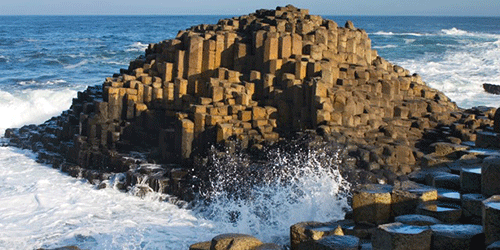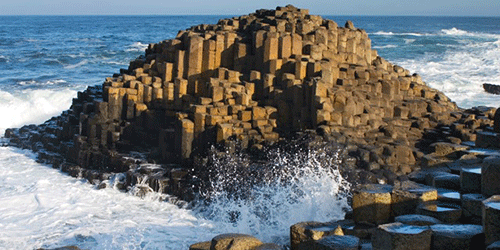Cracking Up
Cooling lava shrinks and cracks, often forming stunning structures, such as the hexagonal columns found in the volcanic remains at Ireland’s Giant’s Causeway. Although cracks spread from the top down, hexagonal columns can emerge from a crack pattern on the surface that is initially rectangular. Researchers now explain why, using a new model that tracks the cracks from the moment they form at the surface to the time when they have penetrated through the cooling lava. The model could be applicable to crack patterns that form in other materials, such as cooling ceramics.
The surface of cooling lava contracts more quickly than the still-warm liquid underneath, creating a stress that is relieved by the formation of cracks. Martin Hofmann from the Dresden University of Technology, Germany, and colleagues considered a uniform lava layer and calculated the energy released from different crack patterns. They found that, in the initial stages of cooling, when the cracks start to appear at random places on the surface, the energy release is greatest if the cracks intersect at 90-degree angles. But as the lava continues to cool and shrink, and the cracks collectively start to penetrate into the bulk, more energy is released per crack if they intersect at 120-degree angles. This transition from individual to collective growth of the cracks drives the pattern from rectangular to hexagonal. The hexagonal pattern is then maintained as the lava cools further, eventually leading to an array of hexagonal columns, similar to those seen in nature.
This research is published in Physical Review Letters.
–Katherine Wright





